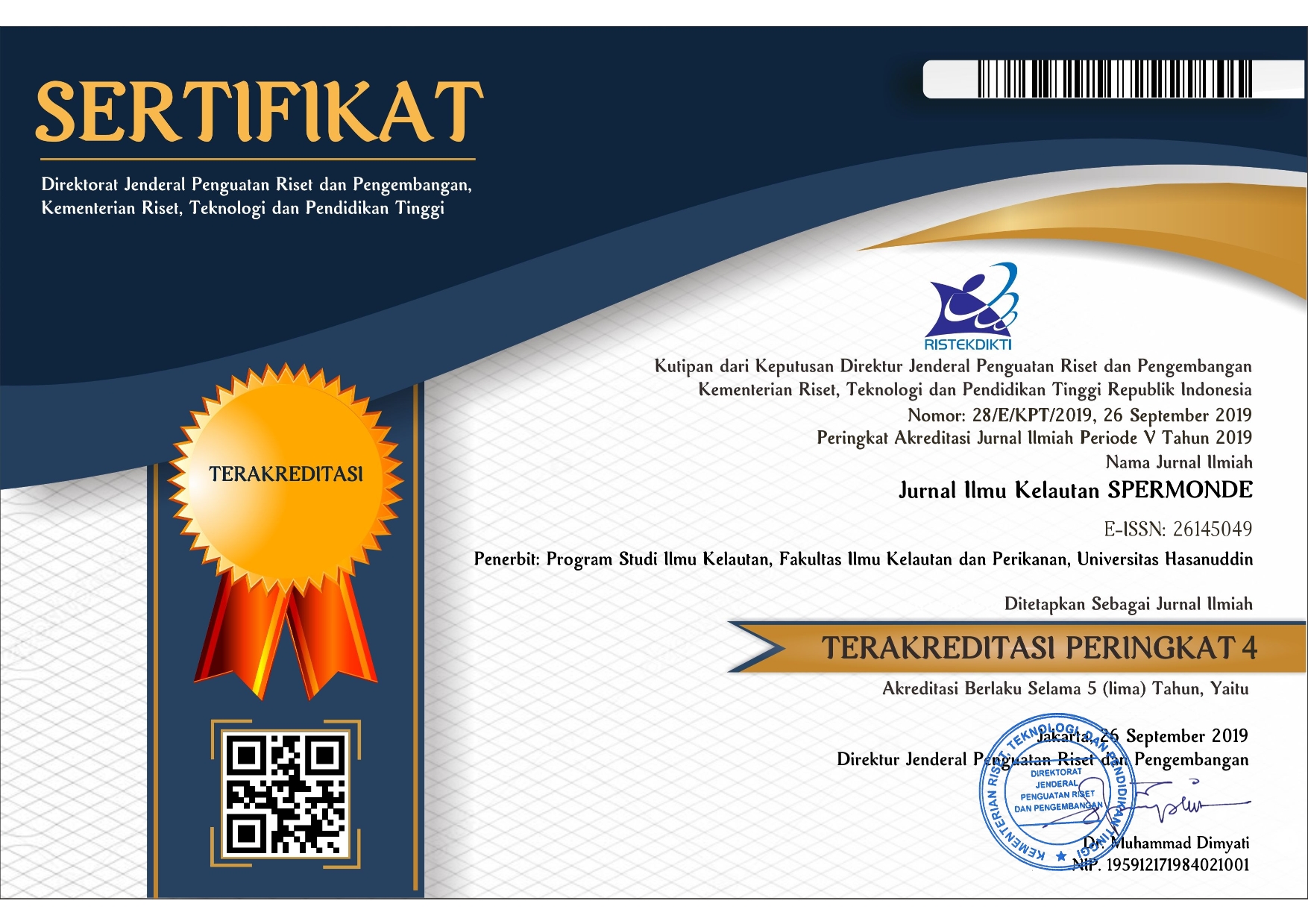ACCELERATION OF CORAL REEF RECOVERY FROM BLEACHING PHENOMENON WITH TRANSPLANTATION METHOD IN LIUKANGLOE ISLAND IN 2019
DOI:
https://doi.org/10.20956/jiks.v7i1.14049Keywords:
Coral Reef, coral bleaching, Acropora nobilis, Acropora formosa, Porites cylindrica, and LiukangloeAbstract
. The aim of this study were to analyze the success of coral reef restoration techniques due to the coral bleaching phenomenon by using several forms of dead coral substrates as a transplantation technique based on the growth and survival of several types of transplanted fragments and to analyze the linkages between coral transplanted growth and environemtal factors. Growth and survival of the transplanted corals on a natural substrate with measured environmental parameters. There are three observation stations for each form of dead coral substrate (natural substrate) which will be used as an attachment medium. The area selection is based on the extent of the bleaching event at a depth of 3-5m. The technique for restoring coral reefs that will be carried out was the transplantation technique which was carried out by three methods, namely by 1) utilizing a natural substrate (dead coral as a coral attachment medium) with a massive form, 2) utilizing a natural substrate with a branching form, and 3) utilizing a natural substrate with a tabulate form. Corals used as transplant fragments were Acropora nobilis, Acropora formosa, and Porites cylindrica. In this study, several environmental parameters were measured, i.e., temperature, salinity, pH, and current velocity. Based on the growth and survival rate values of the Acropora nobilis, A. formosa, and Porites cylindrica species, the use of dead coral substrates (massive, tabulate, and branching) as natural substrates is equally effective in rehabilitating coral reefs due to the bleaching phenomenon. The mean value of coral growth on massive media ranged from 0.04 - 0.35 cm, Tabulate media ranged from 0.04 - 0.32 cm, branching media ranged from 0.04 - 0.20 cm, and on natural media as control media ranged from 0.08 - 0.35 cm. The survival rate of transplanted corals for 4 months of observation showed a relatively high value with general survival rates ranging from 86.67% - 93.33%. Based on the type of media used, it has the same survival value in massive media, i.e., 93.33%, while in tabulate media the survival value is around 86.67% -93.33% and Acropora media is around 90% -93.33%.Downloads
Download data is not yet available.
Downloads
Published
2021-09-02
Issue
Section
Articles
License

This work is licensed under a Creative Commons Attribution-NonCommercial 4.0 International License.

This work is licensed under a Creative Commons Attribution 4.0 International License










